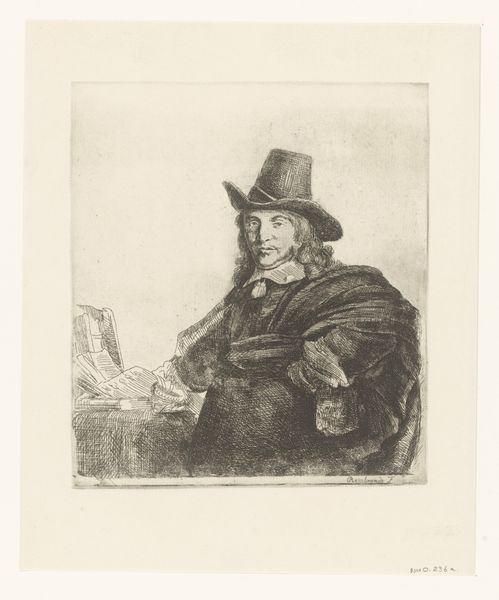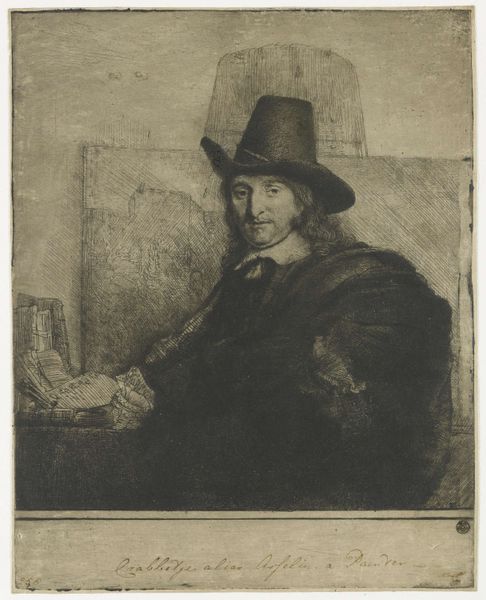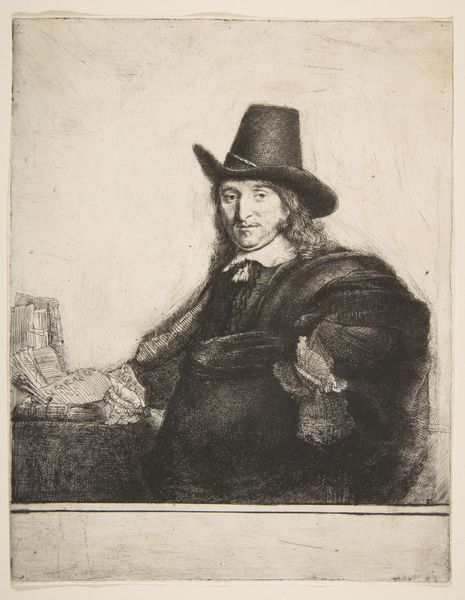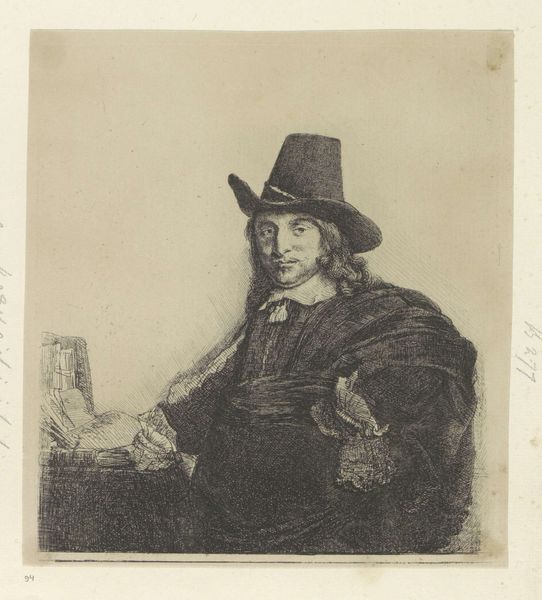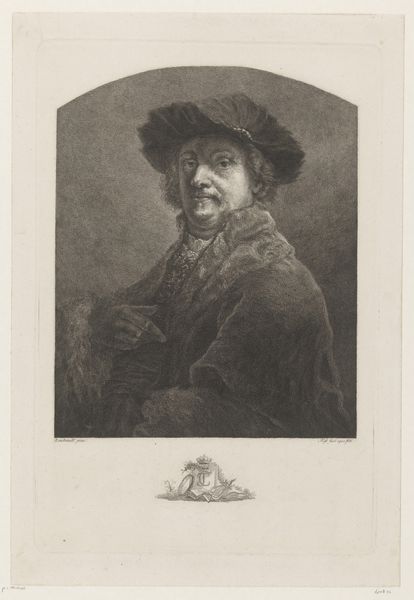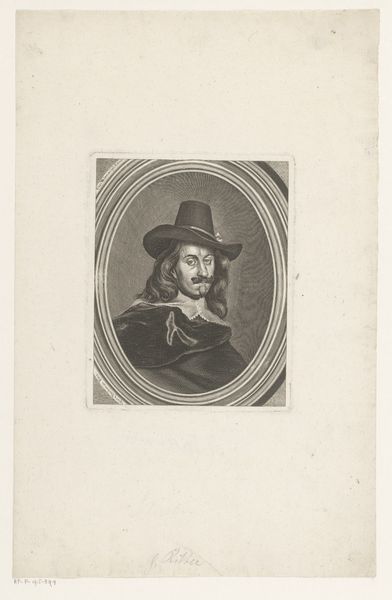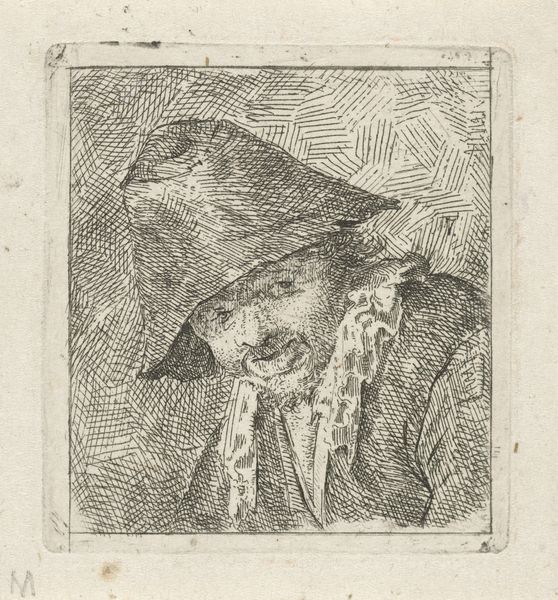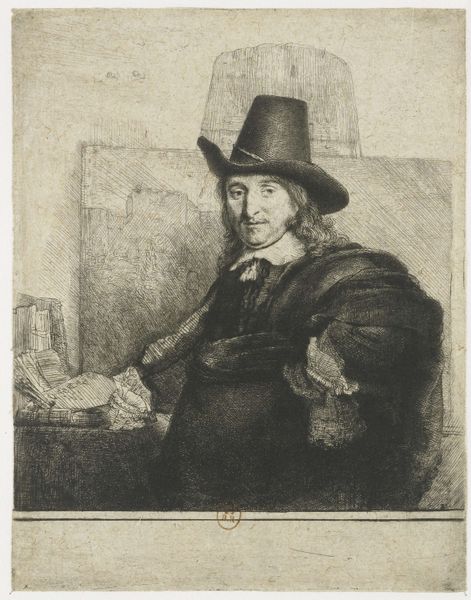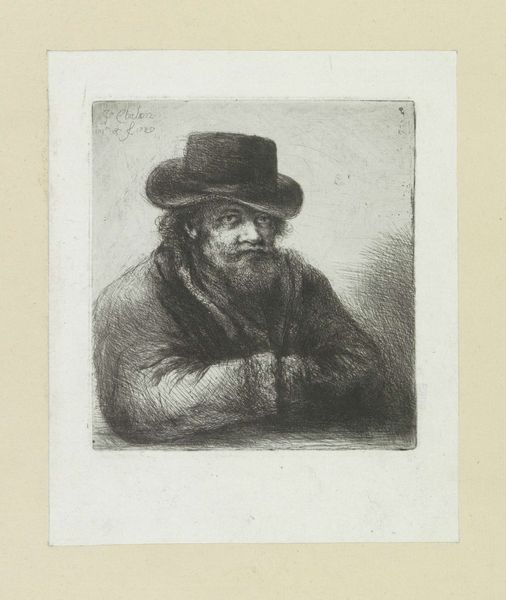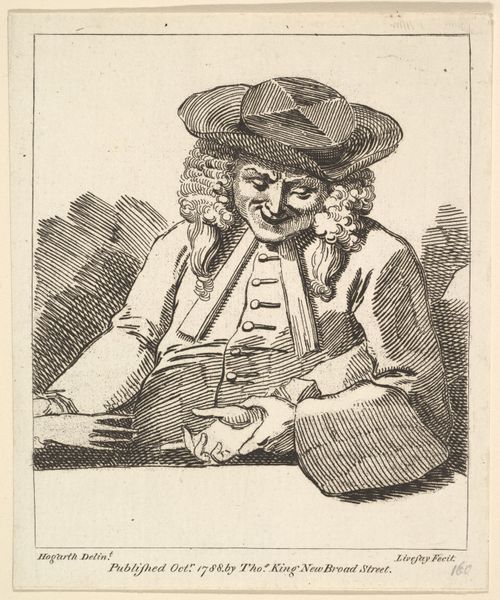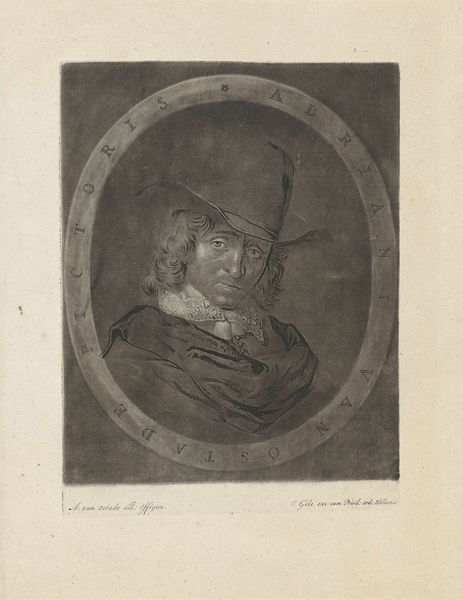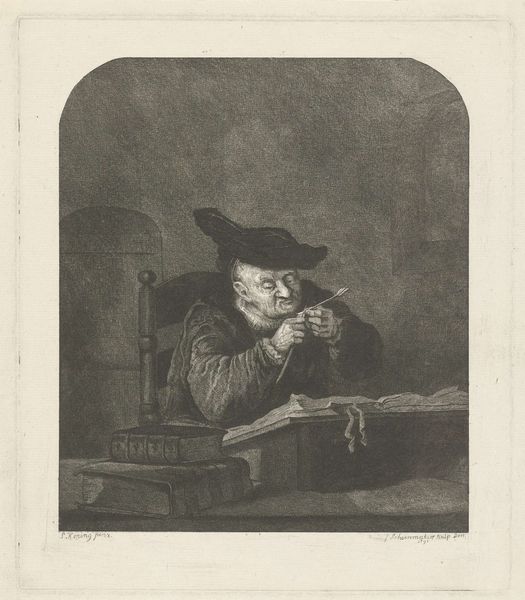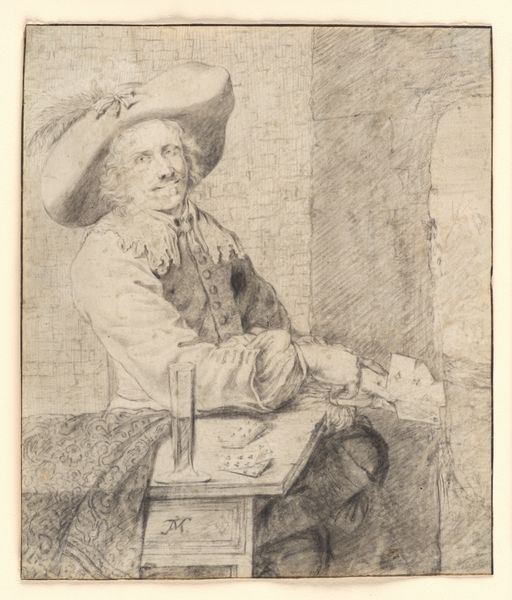
Dimensions: height 212 mm, width 169 mm
Copyright: Rijks Museum: Open Domain
Curator: Here we have Rembrandt van Rijn's portrait of "Jan Asselijn, painter," an etching from possibly 1645 but posthumously printed as late as 1906. Editor: There's something undeniably magnetic about the subject's gaze. I find the limited tonal range fascinating given that it is a print. How did Rembrandt create such dimensionality in a reproduced piece? Curator: The clever manipulation of light and shadow certainly contributes, drawing our eye to Asselijn’s face while rendering his cloak in mysterious darkness. As for the print, etching allowed for the widespread circulation of Rembrandt's artistry, and consider how it democratized portraiture in the 17th century, granting access beyond elite circles. Editor: Absolutely, yet it’s still about labor, isn’t it? The plate etching, the printing… each impression carries that history. I wonder about the quality of the paper, the ink, where those materials sourced. Curator: Well, those are valid concerns, but also, don’t you think there's something of an ironic commentary there? Asselijn was himself a celebrated painter of the Dutch Golden Age; Rembrandt is subtly placing himself and the printmaking trade as equally worthy, even indispensable, in solidifying Asselijn’s place in history. It subtly challenges artistic hierarchies, no? Editor: It could also speak to the print's affordability. Perhaps Rembrandt acknowledges that his likeness of Asselijn can reach a much wider audience through an accessible means of distribution than oil on canvas, something many more could consume and enjoy. Curator: It is quite a thing to imagine viewers over generations owning and engaging with this intimate portrayal. And after so much time, even now it sparks discussion. Editor: It truly does! I wonder if a closer look would reveal the precise material composition of this particular ink? Curator: That might require more specialized equipment and investigation than what is allowed here, but a captivating pursuit, nonetheless. Thanks for those remarks, these reflections allow us to see the artwork with refreshed perspective.
Comments
No comments
Be the first to comment and join the conversation on the ultimate creative platform.
